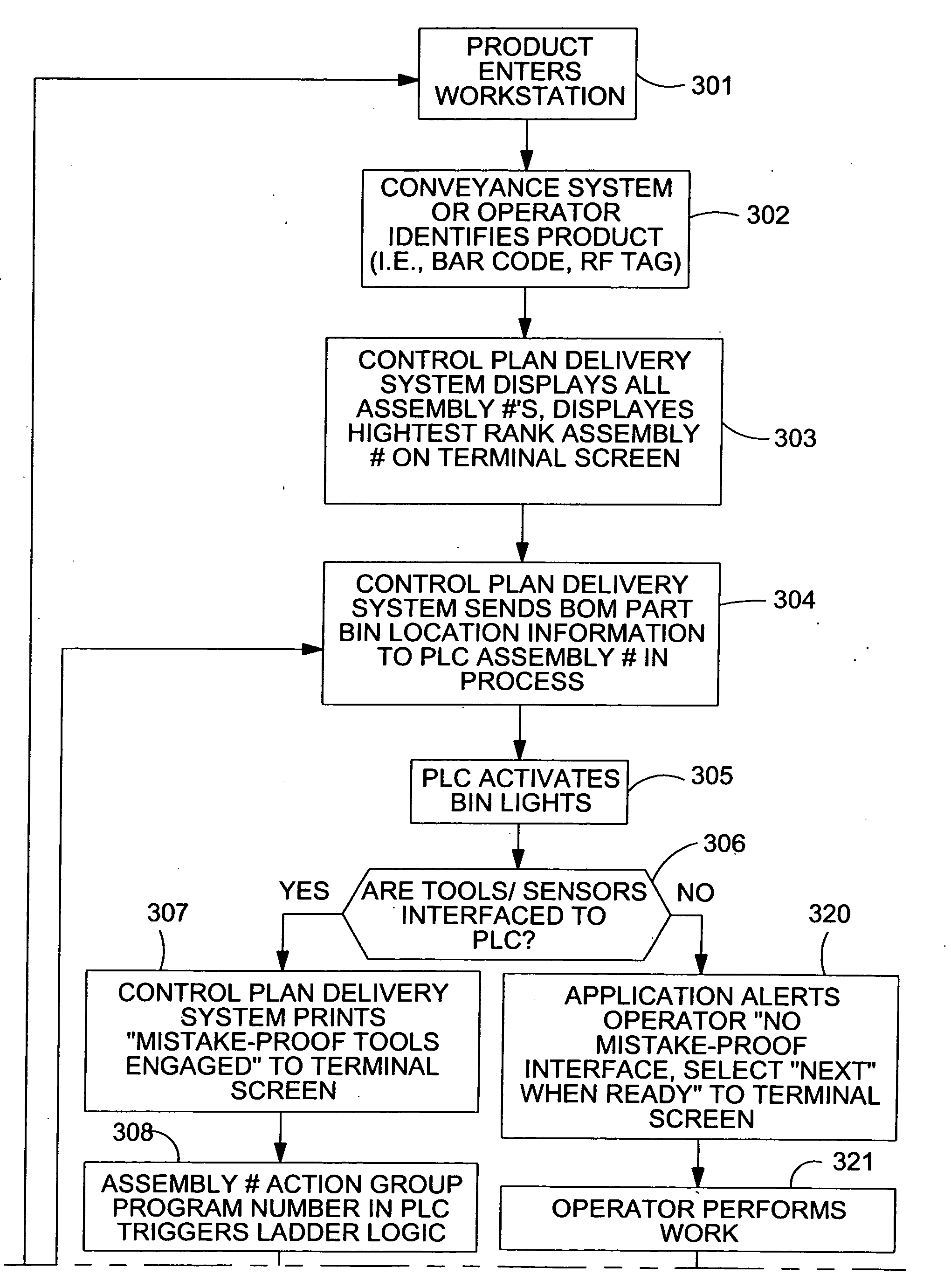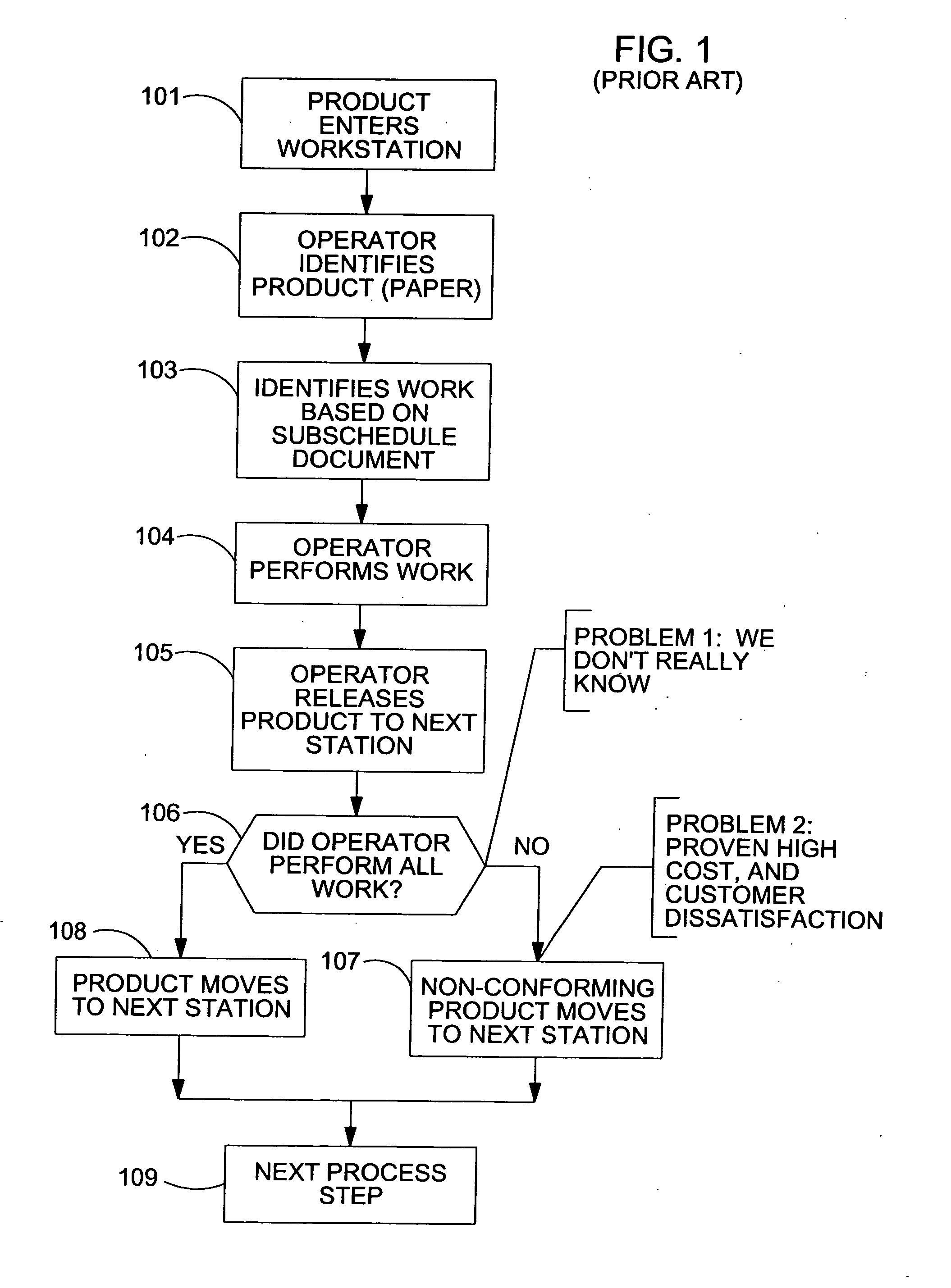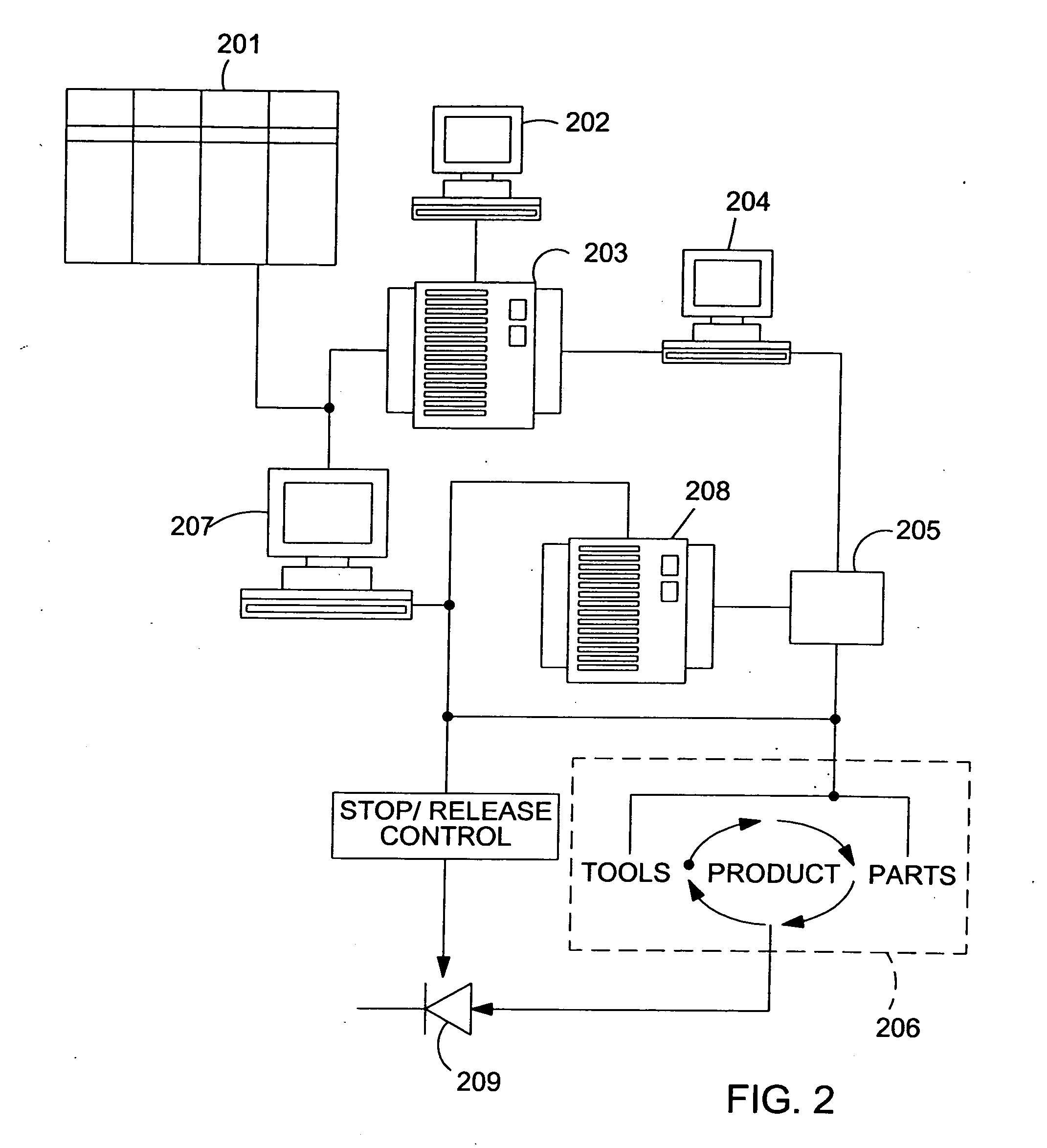Infinitely variable, order specific, holistic assembly process control system
- Summary
- Abstract
- Description
- Claims
- Application Information
AI Technical Summary
Benefits of technology
Problems solved by technology
Method used
Image
Examples
Embodiment Construction
[0023] Referring first to FIG. 2 it will be seen that the invention of the present application is implemented using a networked data processing system. A mainframe server 201 is provided, containing all current product specifications including product bills of material (BOM), tooling, time standards and order configurations. Manufacturing engineering personnel enter data via a terminal at 202 into an operations data server at 203. This data includes assignment of assemblies to operations and defines part / bench locations. Action definitions (specific sensors or PLC action) are also entered, along with error messages to be displayed if an action fails. Actions are collected and assembled into action groups, which are in turn related to assemblies. Visual aids for assembly operations may be provided and related to specific assemblies. At 204 Systems Integration personnel create PLC logic, tag names, and program IDs based upon the definitions previously provided by manufacturing enginee...
PUM
 Login to View More
Login to View More Abstract
Description
Claims
Application Information
 Login to View More
Login to View More - Generate Ideas
- Intellectual Property
- Life Sciences
- Materials
- Tech Scout
- Unparalleled Data Quality
- Higher Quality Content
- 60% Fewer Hallucinations
Browse by: Latest US Patents, China's latest patents, Technical Efficacy Thesaurus, Application Domain, Technology Topic, Popular Technical Reports.
© 2025 PatSnap. All rights reserved.Legal|Privacy policy|Modern Slavery Act Transparency Statement|Sitemap|About US| Contact US: help@patsnap.com



